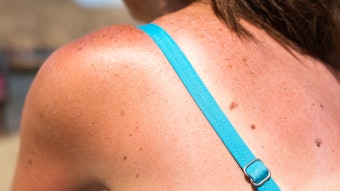Join DNA to go Beyond Sunscreen on “Don’t Fry Day” Fourth Annual National Council on Skin Cancer Prevention “Don’t Fry Day” Campaign Encourages Sun-Safety Awareness
Despite skin cancer being largely preventable, it remains by far the most common type of cancer in the United States. There are more than 3.5 million cases of skin cancer diagnosed in more than two million people each year, which is more than new cases of breast, prostate, lung and colon cancers combined. To help reduce rising rates of skin cancer, the Dermatology Nurses’ Association (DNA) teamed up with the National Council on Skin Cancer Prevention to designate the Friday before Memorial Day, May 25, 2012, as “Don’t Fry Day.”
This year, both DNA and the National Council urge everyone to go beyond sunscreen to protect their skin while enjoying the outdoors. While generous sunscreen usage is an important way to protect your skin from the sun, there are additional sun-safety measures that can help prevent skin cancer.
- Avoid sun burning, intentional tanning and using tanning beds.
- Wear sun-protective clothing, a wide-brimmed hat and sunglasses.
- Seek the shade when you can. Use umbrellas or other shade structures when outdoors.
- Use extra caution near water, snow and sand.
- Get vitamin D safely through food and vitamin D supplements.
“We are honored to be a supporter of Don’t Fry Day for the fourth year in a row,” says Victoria Elliot, DNA executive director. “This campaign is directly in line with DNA safety and awareness initiatives to educate the public about sun protection and skin cancer prevention.”
When choosing a sunscreen, the National Council on Skin Cancer Prevention recommends a broad-spectrum sunscreen with a sun protection factor (SPF) of 30 or higher for protection from ultraviolet A (UVA) and ultraviolet B (UVB) rays. Sunscreen should be applied 15 minutes before going outdoors and reapplied every two hours.
Skin cancer is on the rise in the United States. Here are some statistics.
- There are more than 3.5 million new cases of skin cancer diagnosed and 2.2 million people treated in the U.S. each year.
- The American Cancer Society estimates that 76,250 cases of melanoma (the most serious form of skin cancer) will be diagnosed in 2012 in the United States, and 9,180 people will die from the disease.
- Melanoma incidence rates have been increasing for at least 30 years. Since 2004, incidence rates among whites have been increasing by almost 3% per year in both men and women.
- Most skin cancers are caused by overexposure to ultraviolet (UV) radiation.
- Sunburns during childhood increase the risk of melanoma and other skin cancers later in life.
- Melanoma is now one of the most common cancers among young adults ages 15-29.
To minimize the harmful effects of too much UV exposure, the National Council advocates that comprehensive protection from UV radiation should be a life-long, year-round practice for everyone.










